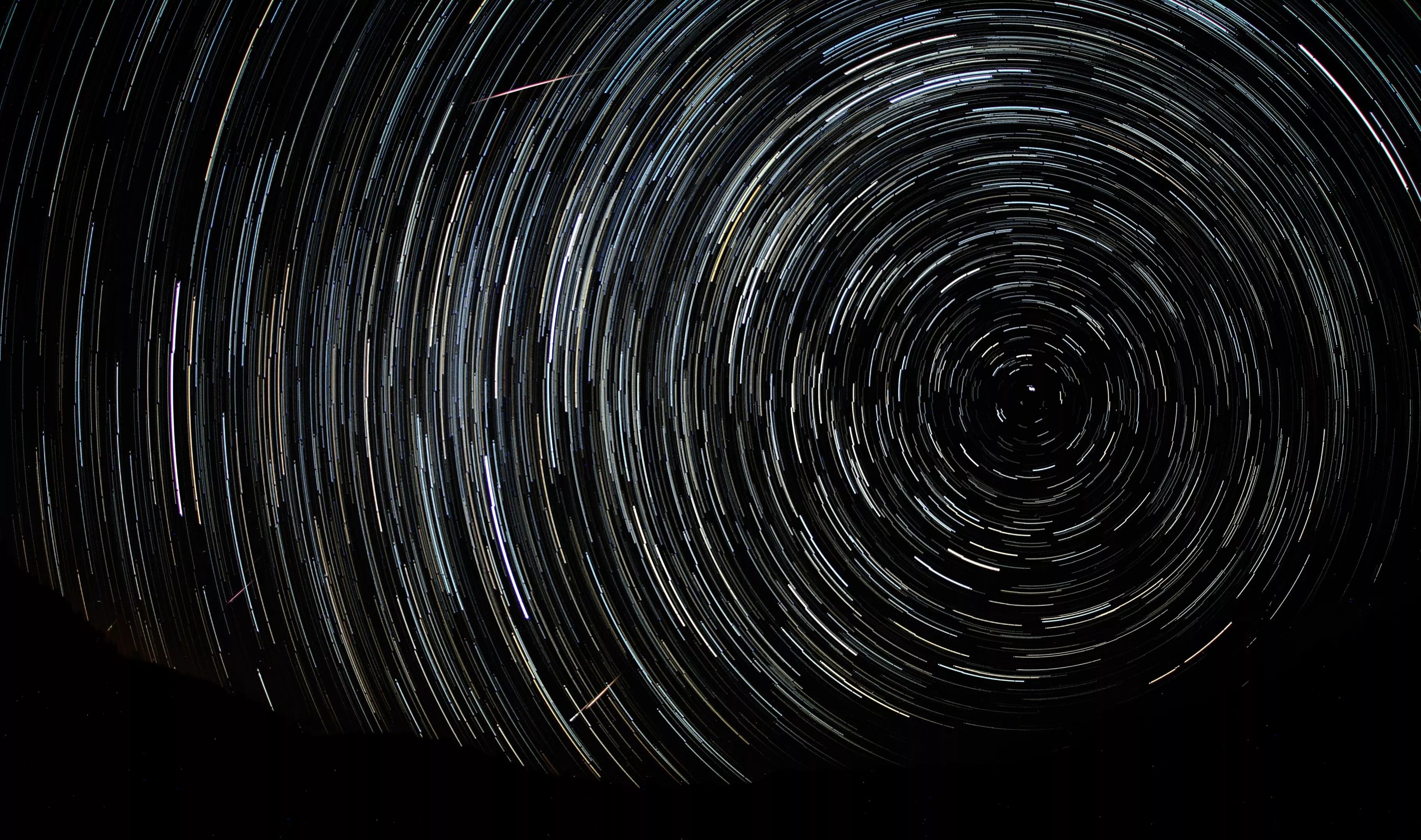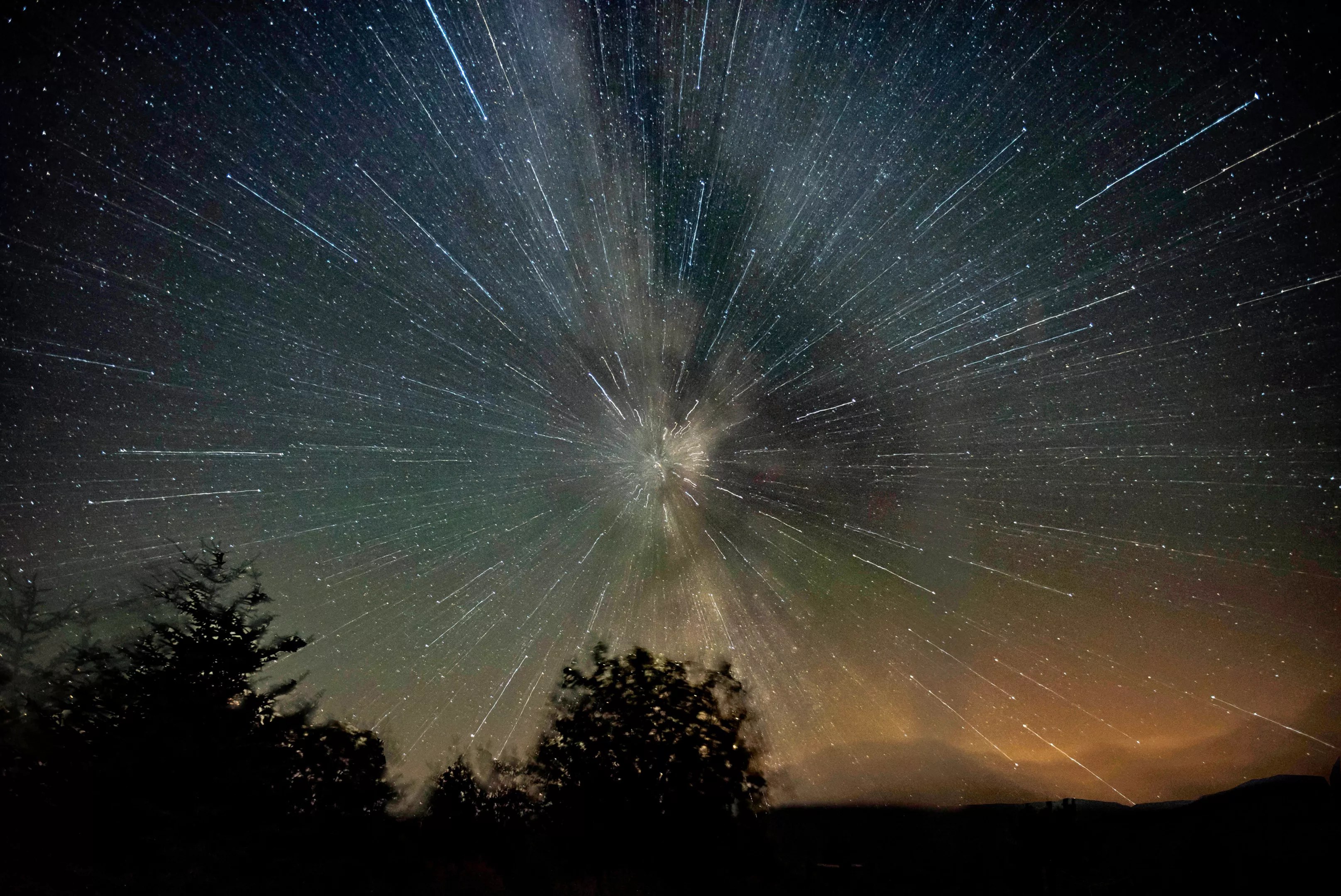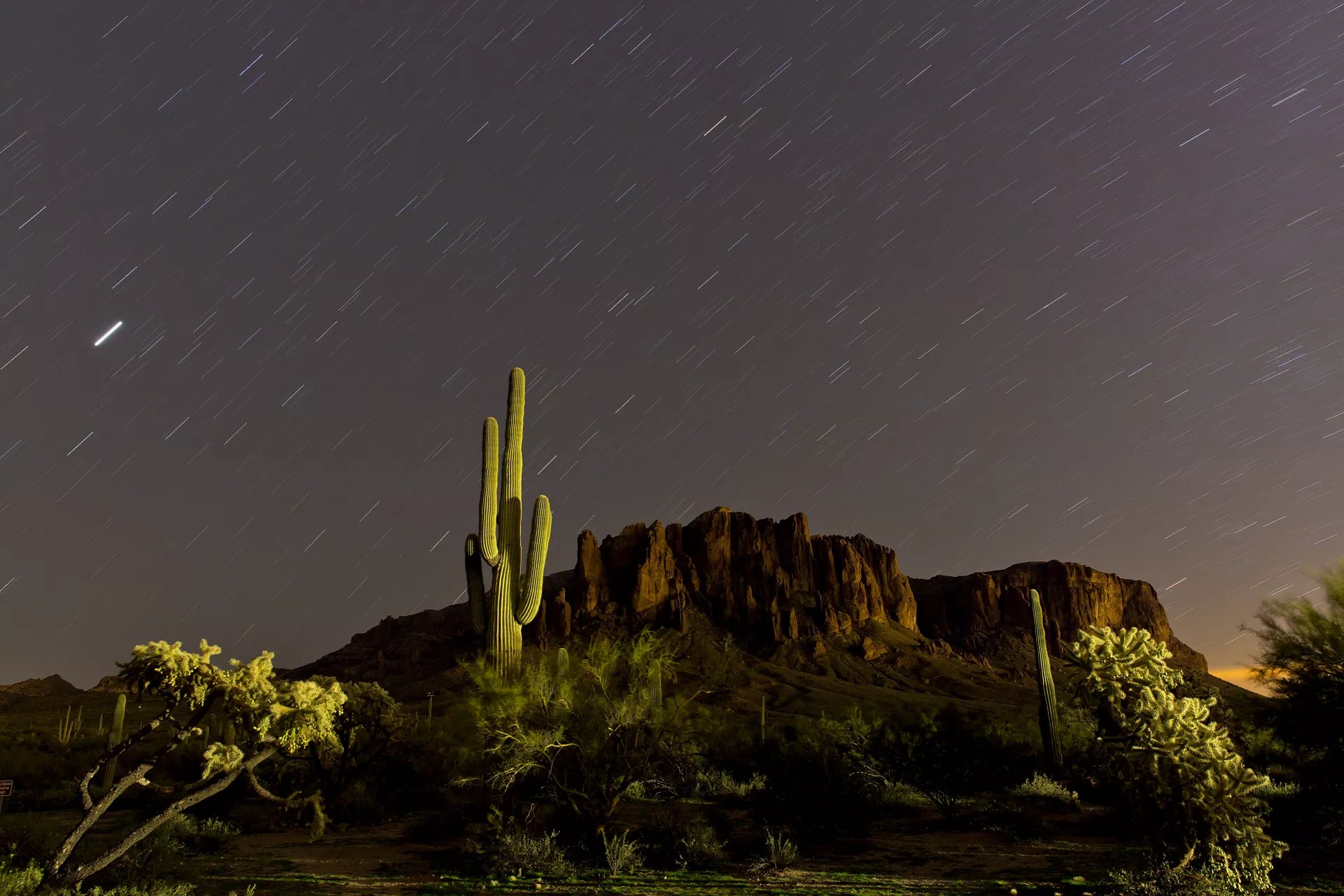
Scott Taylor/CC BY-ND 2.0/Flickr

Audio By Carbonatix
Skywatchers of Arizona, the moment you’ve been waiting the entire summer for has almost arrived. The annual Perseid meteor shower, which features one of the year’s biggest and brightest collections of shooting stars, is set to peak this weekend.
Running from late July through late August each year, the Perseids – so named because they appear to emanate from the constellation Perseus – are a popular event for skywatchers and astronomers alike due to the sheer number of shooting stars caused by the shower.
Anywhere from 60 to 100 meteors per hour occur during the peak period of the Perseids, which makes for a spectacular viewing experience.
If you’d like to check out all these shooting stars over Arizona, here’s everything to know about when and where to look.

The Perseid meteor shower is set to peak in mid-August.
Trinity Mirror/Mirrorpix/Alamy
What causes the Perseid meteor shower?
Each summer, the Earth’s orbit comes into contact with a trail of rock, dust, ice particles and other interstellar matter left behind by Comet Swift-Tuttle. This celestial detritus hits our planet’s atmosphere at more than 100,000 mph and transforms into burning streaks of light.
What time is the Perseid meteor shower?
This year’s Perseid meteor shower will officially peak on Sunday night into Monday morning, according to NASA. The best time to view the Perseids will be after midnight into the early hours before dawn. You’ll be able to see meteors as early as 10 p.m., though.
Can’t stay up late or get up early because of your work obligations? The good news is that large amounts of meteors will be visible on the nights before and after.
Where do you look for Perseids in the sky?
Look to the northern skies towards the constellation Perseus, which rises after midnight.

Lost Dutchman State Park east of Phoenix is a good spot to see the Perseids.
Arizona State Parks
Where are the best places to see the Perseid meteor shower?
Any location with open stretches of sky that are far away from any sources of light pollution. You’ll be able to see meteors anywhere in the Valley, even in the middle of the city, but viewing conditions improve if its as dark as possible.
If you live on the outskirts of town you should already be good to go. If you’re in the heart of the metro Phoenix sprawl, consider taking a trip out to spots like Lost Dutchman State Park east of the Valley or White Tank Mountain Regional Park out west.
You can also hit up the Clear Sky Chart website, which offers skywatching and visibility forecasts for specific locations.
What will viewing conditions be like?
That depends on the monsoons, which are as temperamental as ever this summer. Late night or early morning storms could potentially cause clouds to obscure your view of the skies.
The moon will be in its waxing crescent phase on Sunday night, but will set at approximately 10:58 p.m. and won’t disrupt your viewing experience with its glow.
Meteor shower viewing tips
Here are some suggestions from the American Meteor Society about how to see as many meteors as possible.
- Bring a chair or blanket to be able to kick back and see as much of the sky as possible.
- Put away your phone and allow your eyes to adjust to the dark for at least 20 to 30 minutes.
- Binoculars or telescopes are of little use when viewing meteor showers because of their narrow field of view.